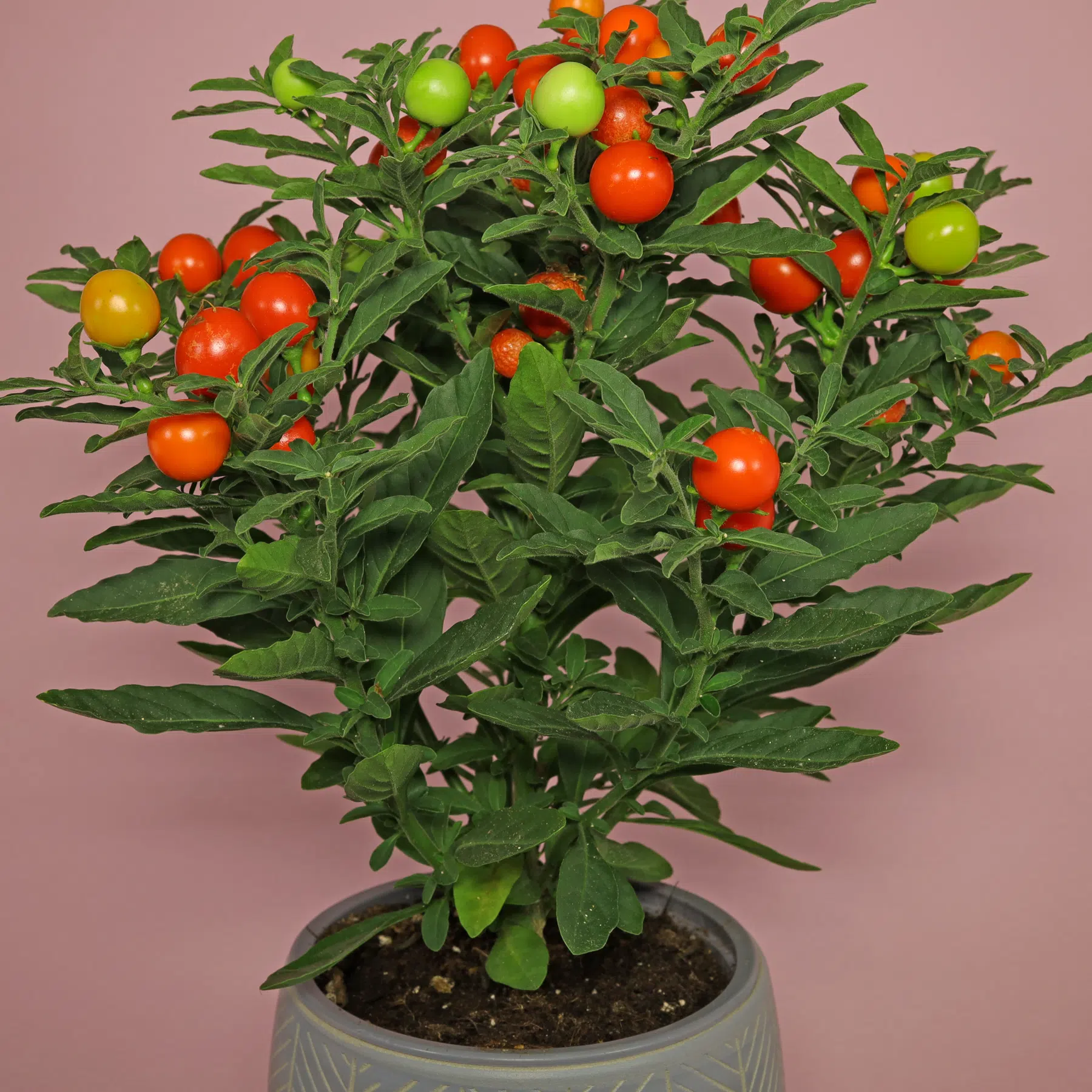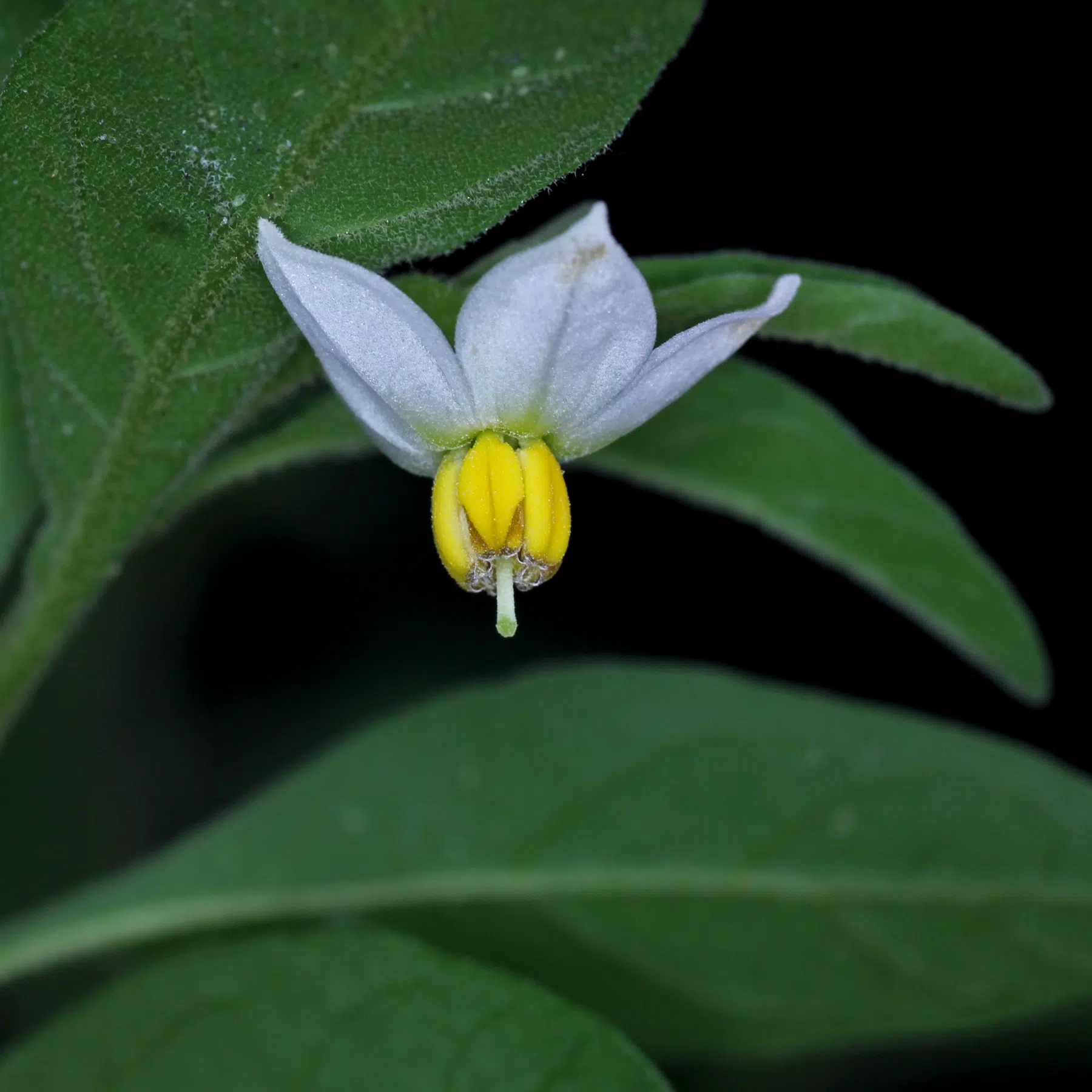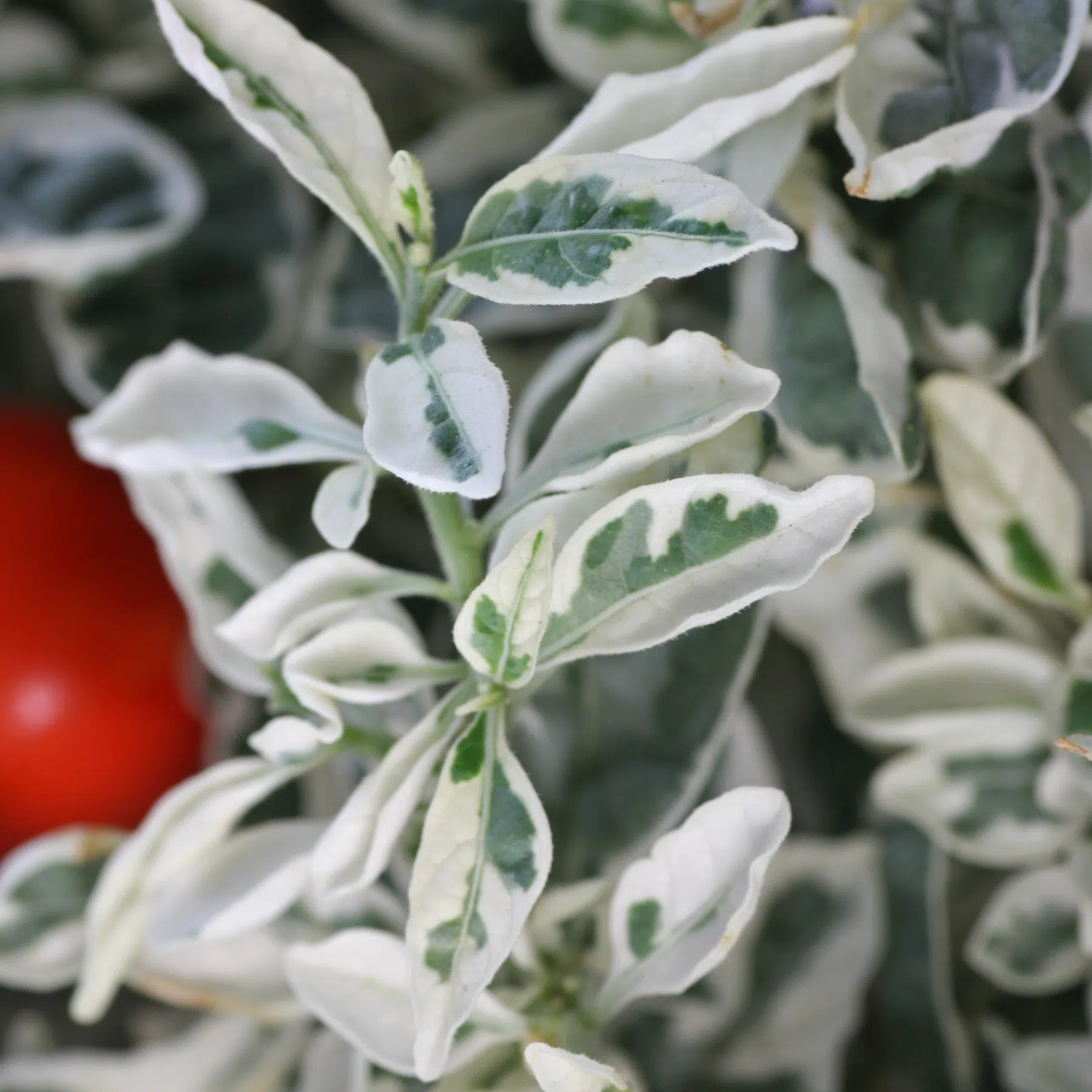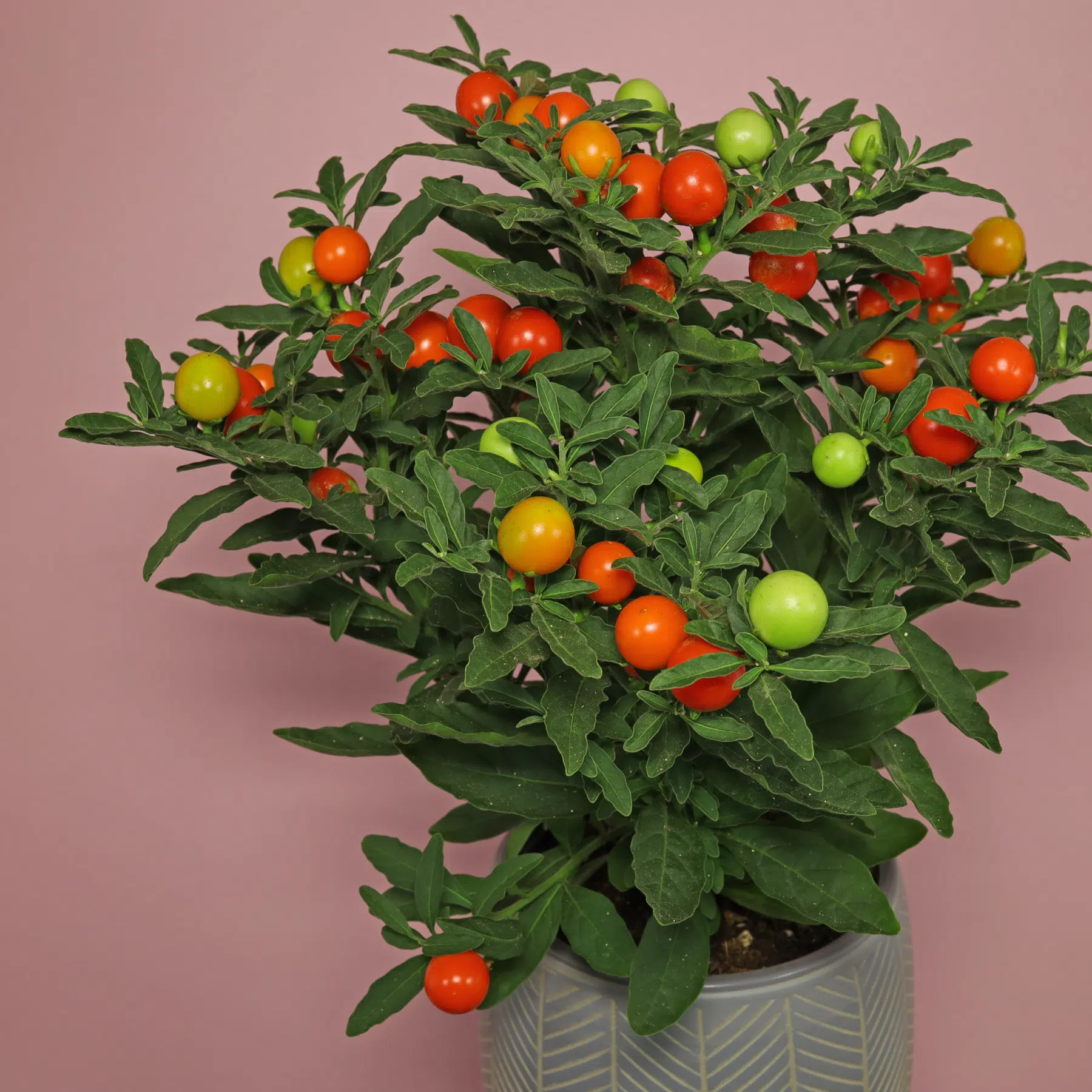Jerusalem Cherry, Madeira Winter Cherry

Description
The Jerusalem Cherry (Solanum pseudocapsicum) not only looks like a tomato, it is related to it. This shrubby member of the Nightshade family reach a height of up to 40 inches (one meter). It shows its white flowers from spring to early summer. The poisonous berries can be seen until winter.

Plant care
Lighting & Temperature
Solanum pseudocapsicum can be grown indoor or as a balcony plant.
Indoor, the location should be bright to full sun. On the balcony or in the garden, where it can spend the summer, it can also cope with partial shade, if occasionally a ray of sunlight gets through to it.
In a large container in which the pot root ball does not dry out too quickly, the Jerusalem Cherry tolerates the hot summer sun.
If it should bloom in spring, temperate overwintering at about 59 °F/15 °C is ideal. Those who overwinter it at 41 to 50 °F (5 to 10 °C) are on the safe side in terms of flowering. Temperatures close to 32 °F/0 °C are also tolerated for a short time.

Soil
Mixes for indoor and container plants, bonsai, palms, herbs or vegetables can be used.

Watering & Feeding
The soil should be allowed to moderately dry between the waterings. Pot root ball dryness can result in the shedding of flower buds or berries.
Waterlogging, that is, when the soil is under water for days, is not liked by Solanum pseudocapsicum. It can cause root rot.
In the first year after purchase or repotting, it is not necessary to fertilize. From the following year, liquid fertilizer can be added to the watering every 4th to 8th week from spring to fall.
Slow-release fertilizers such as sticks or pellets can be given in spring and summer.

Pruning
A good time to prune is in early spring.
The plant sap is toxic and can cause allergic reactions if it comes in contact with the skin.
Propagation
Propagation from seeds and cuttings is possible.
